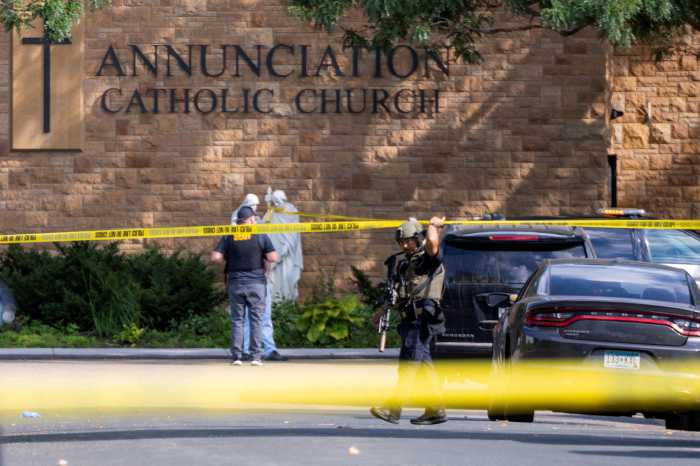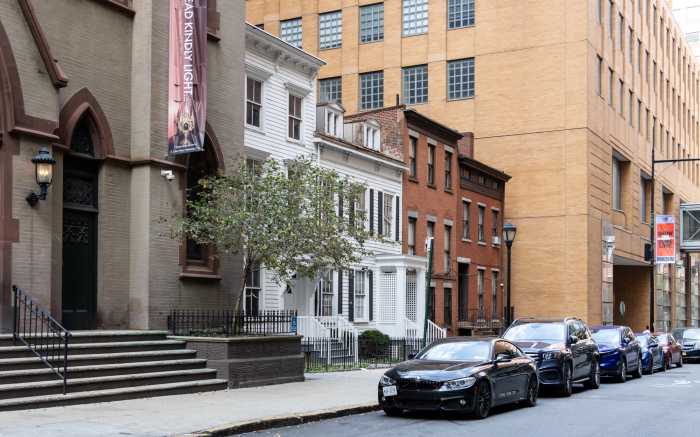Renato Seabra claims he acted as a “conduit for God” when he castrated and killed Carlos Castro.
BY DUNCAN OSBORNE | The prosecution in the murder trial of Renato Seabra, the accused killer of Carlos Castro, was dealt a blow after the judge hearing the case ruled that a primary prosecution witness cannot testify that Castro told her his relationship with the now 23-year-old Seabra was over.
“I don’t feel comfortable letting those statements in because under the law there is a certain lack of reliability,” Judge Daniel P. FitzGerald said in court on September 24.
In a four-hour September 21 hearing, attorneys argued about the proposed testimony from Wanda Pires, who knew the 65-year-old Portuguese TV personality and gay activist for more than 20 years before his 2011 murder in a Manhattan hotel.
The prosecution theory is that Seabra was using Castro to gain fame and fortune. The younger man flew into a rage and killed Castro when he was faced with the end of his gravy train, the prosecution aims to argue.
The two men met in October of 2010, according to Seabra’s statement, which was read in court on September 14. They were on a three-week vacation and planned on returning to Portugal on January 16 of last year.
According to documents that were read in court and statements by prosecutors and defense attorneys, Pires told the district attorney’s office that by January 6 Castro informed her that Seabra was “treating him like trash” and was “verbally abusive.”
The older man said Seabra had stolen money from him, Pires said. When the couple went to a bar on January 6, Castro objected when Seabra flirted with some young women and gave them his phone number.
“This caused a big argument that lasted throughout the night,” said a police report that cited Pires and was read in court by Rubin M. Sinins, an attorney who, along with David Touger, is defending Seabra.
Pires told police that Castro had decided to end the relationship. He changed their return flight to Portugal to January 9, she said. They argued again on January 7, and Seabra launched an hour-long attack on Castro.
Such hearsay evidence is typically barred at trials, but there are exceptions to that ban. The defense argued this evidence is legally barred because it is uncorroborated, and fought to keep any reference to a break-up out of Pires’ testimony.
A major problem for the prosecution was that there is no evidence that Castro ever told Seabra the relationship was over or that Castro changed their itinerary.
“There is no proof that Renato had any competent knowledge of those statements,” Touger said in court. And of the changed plans, Touger said, “There’s no unequivocal proof that Castro intended to do that.”
Seabra strangled Castro, then stabbed him in the face and groin with a corkscrew. After removing Castro’s testicles with the corkscrew, he hit Castro’s head with a computer monitor and “stomped on Carlos’ face while wearing shoes,” according to a paraphrased version of the
statement he gave police that was in court filings.
Seabra faces one second-degree murder count that alleges he intended to kill Castro. The maximum penalty for second-degree murder is 25-years-to-life.
The defense will use a mental disease or defect defense, or insanity defense as it is commonly known, that asserts Seabra could not tell right from wrong when he killed Castro, so he cannot be held criminally liable. Keeping the jury from hearing other explanations for Seabra’s actions may aid that argument.
In his statement, which the jury will hear, Seabra told police that he was “struggling with his homosexuality and his demons” and “had second guessed his sexuality.” He became enraged because he “could not control the virus of homosexuality that was spreading throughout the world.”
In a 2011 court filing, the defense wrote, “Mr. Seabra developed a manic episode and became fulminantly psychotic. He acted on his delusional ideas when he attacked and killed Mr. Castro. He did not appreciate the wrongfulness of his actions, as he was acting as a conduit for God.”
Seabra gave his statement to police roughly 36 hours after the killing, and he did not tell police he was acting on instructions from God.
District attorneys are not required to prove motive in New York criminal cases, but juries typically like to hear such evidence and prosecutors generally like to present it.
Jury selection began on September 24 with prospective jurors being asked to complete a 15-page, 57-question questionnaire. In addition to standard questions about work, education, and family, jurors were asked if they, a family member, or a close friend had a history of mental illness or had made any suicide attempts and if they had “strong views or opinions regarding homosexuality” that would keep them from being impartial.





































